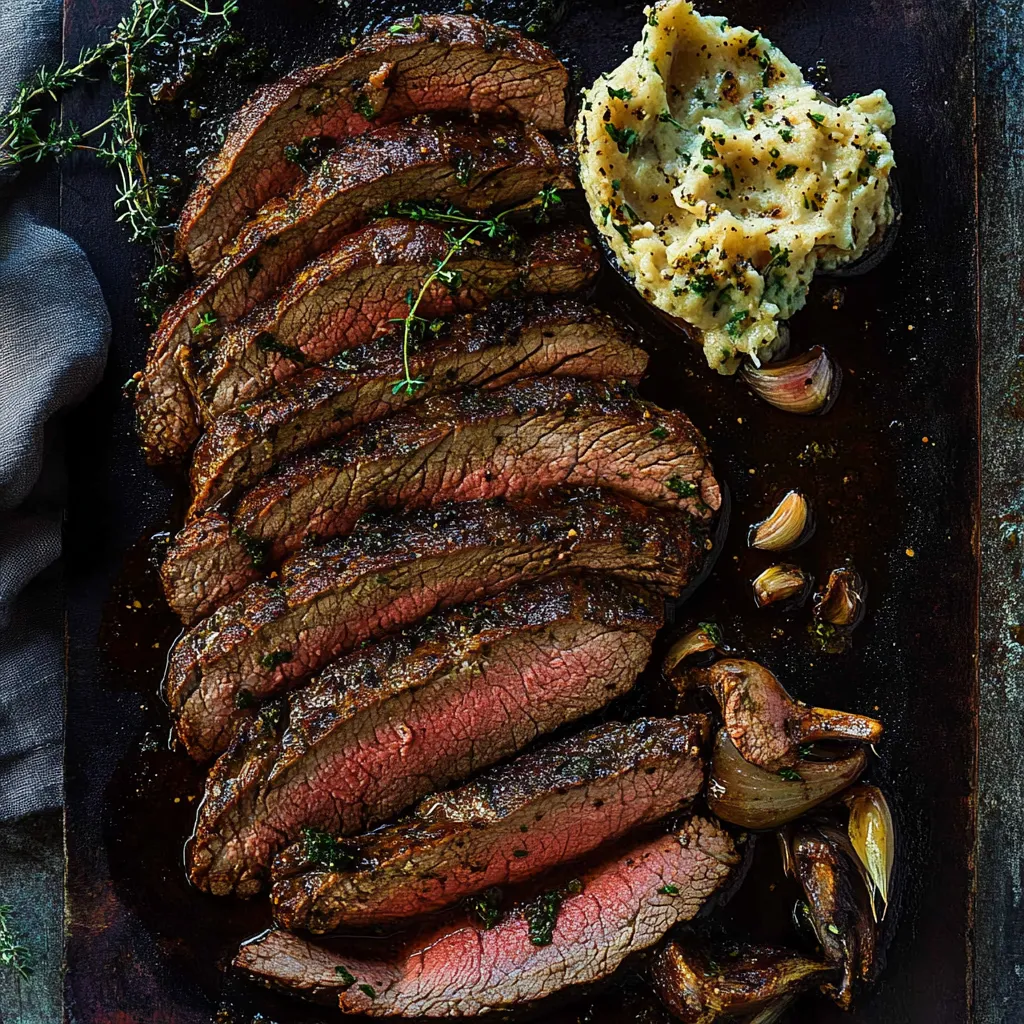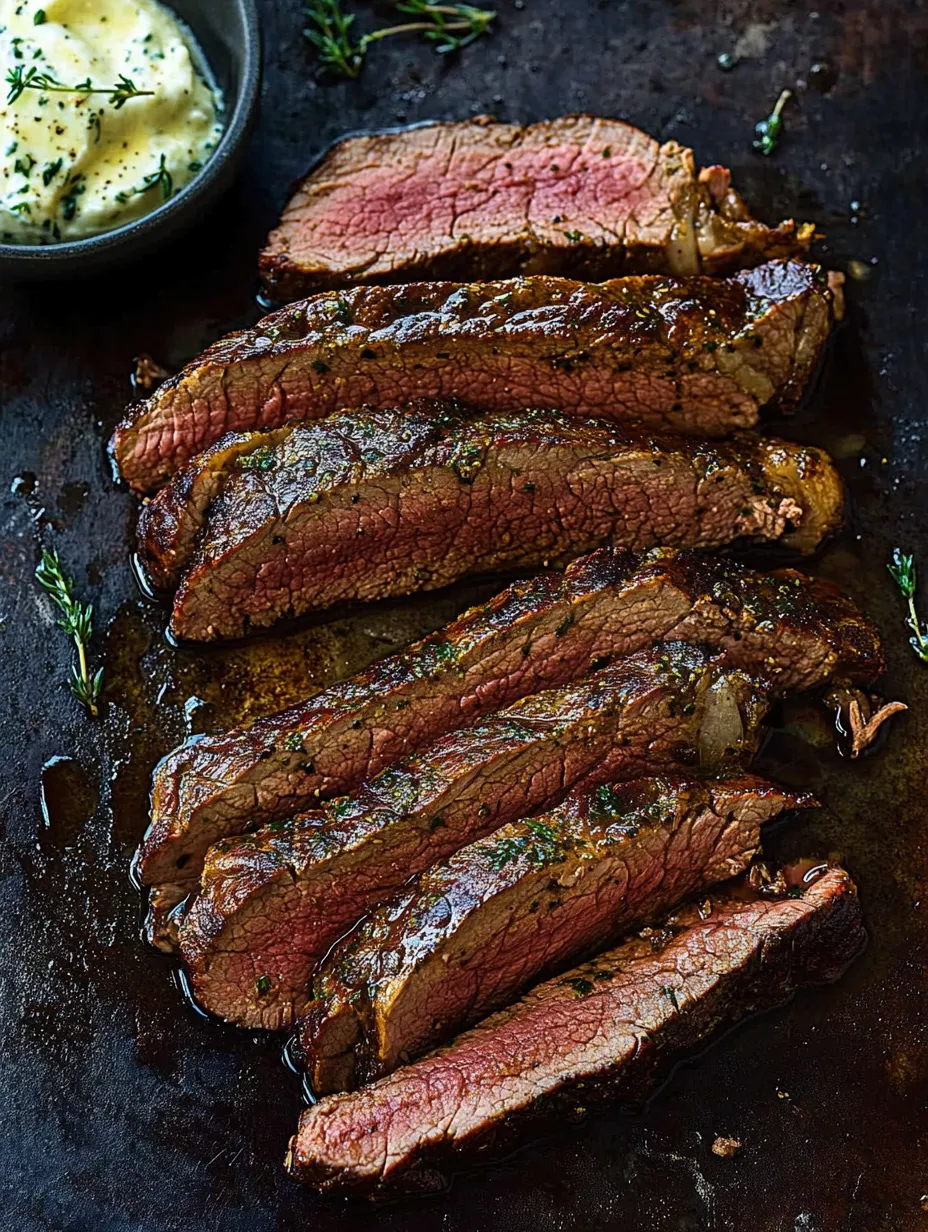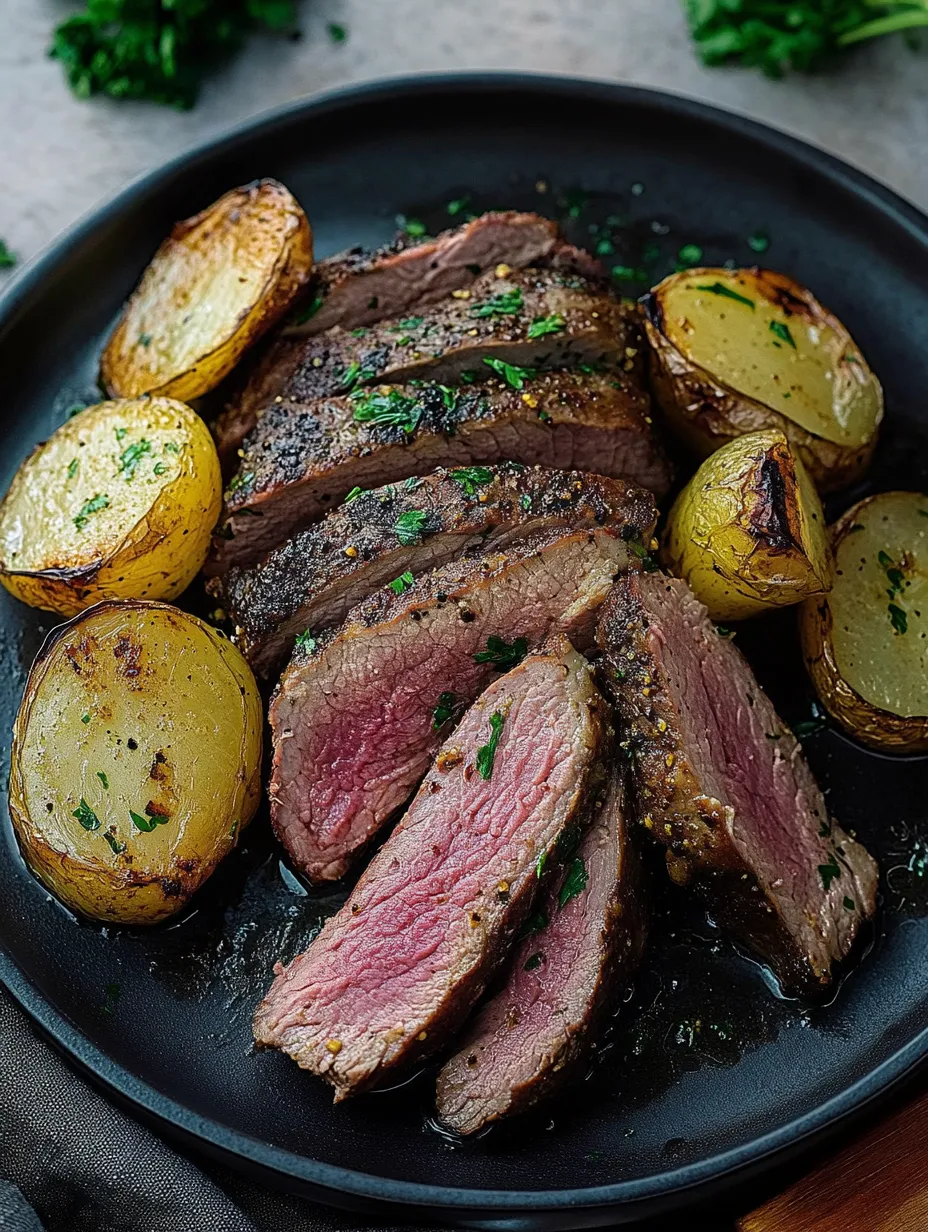 Pin it
Pin it
This succulent London Broil transforms an affordable cut of beef into a restaurant-worthy meal with minimal effort. The simple marinade works magic, tenderizing the meat while infusing deep flavor that caramelizes beautifully under the broiler.
I discovered this technique during a summer when my in-laws visited and needed to impress without breaking the bank. Now it's our go-to whenever we crave steak but want something more special than typical grilled cuts.
Ingredients
- London broil: Beef cut offers the perfect balance of leanness and flavor when prepared correctly
- Garlic cloves: Provide essential aromatic foundation that penetrates the meat during marination
- Soy sauce: Creates depth and helps tenderize the meat with its natural enzymes
- Extra virgin olive oil: Helps carry flavor compounds and promotes even cooking
- Balsamic vinegar: Adds subtle sweetness while helping to break down muscle fibers
- Paprika: Contributes mild smokiness and beautiful color when seared
- Kosher salt: Enhances all other flavors and improves the texture of the finished steak
- Black pepper: Provides necessary heat counterpoint to the sweet and savory elements
- Fresh parsley: Brightens the rich flavors when served
- Cowboy butter: Optional but transforms the dish into something truly special
Step-by-Step Instructions
- Prepare the Marinade:
- Combine minced garlic with soy sauce, olive oil, balsamic vinegar, paprika, salt and pepper until fully incorporated. This mixture provides the perfect balance of acid, fat, and flavor to tenderize and season the meat.
- Marinate the Meat:
- Place London broil in a zippered bag with marinade and refrigerate for at least 2 hours or preferably overnight. The longer marination allows the flavors to penetrate deeper into the meat fibers, resulting in more consistent flavor throughout.
- Bring to Room Temperature:
- Remove meat from refrigerator 30 minutes before cooking. This crucial step ensures even cooking from edge to center and prevents the shock of cold meat hitting hot surfaces which can cause toughening.
- Preheat and Prepare:
- Set oven to broil with rack positioned in the middle. The distance from the heating element is important as too close will char the exterior before the interior cooks properly.
- Sear the Meat:
- Heat oil in a large skillet until almost smoking then sear London broil approximately 2 minutes per side until rich brown crust forms. This initial sear locks in juices and creates the foundation for exceptional flavor through Maillard reaction.
- Broil to Perfection:
- Transfer the skillet to preheated oven and broil for 10 to 12 minutes, flipping halfway through the cooking process. The direct heat from above creates additional caramelization while bringing the meat to your desired internal temperature.
- Rest Before Slicing:
- Allow meat to rest 10 minutes before slicing against the grain. This resting period redistributes juices throughout the meat that would otherwise run out if cut immediately, resulting in a juicier final product.
- Serve with Style:
- Slice thinly against the grain, garnish with fresh parsley, and offer cowboy butter for an indulgent finish. The thin slicing ensures each bite remains tender regardless of doneness.
 Pin it
Pin it
My grandmother taught me this preparation method, insisting that the balsamic vinegar was her secret weapon. She would serve it for Sunday dinners when company came over, always thinly sliced and arranged in a fan pattern that made the simple cut look elegant.
Temperature Guide for Perfect Doneness
Achieving your ideal doneness level requires attention to internal temperature. For rare steak, aim for 125°F which produces a bright red center with a cool to warm interior. Medium rare requires 130-135°F, resulting in a warm interior with deep pink coloration. Medium doneness at 140°F provides a pink center that feels warm throughout when touched. For those preferring less pink, medium well at 145°F maintains just a hint of pink at the center surrounded by well-cooked meat. Always use a reliable meat thermometer inserted into the thickest part of the steak for accuracy. Remember that carryover cooking will increase the temperature by approximately 5 degrees during resting.
 Pin it
Pin it
Clever Leftover Ideas
Transform yesterday's London Broil into today's culinary masterpiece with thoughtful repurposing. Thinly sliced cold leftovers make incredible sandwiches on crusty bread with horseradish cream. For a quick lunch, top mixed greens with sliced steak, blue cheese crumbles, and balsamic glaze. Alternatively, chop the meat into small cubes and create a hearty beef hash with potatoes and bell peppers for breakfast. The possibilities extend even to pasta dishes where the sliced steak can complement a mushroom cream sauce brilliantly.
Selecting the Perfect Cut
While traditional London Broil calls for flank steak, several beef cuts work beautifully with this preparation method. Top round offers excellent value with good flavor when sliced thinly. Flank steak provides rich beefy taste with distinctive grain that becomes tender when properly marinated and sliced. Skirt steak brings intense flavor though requires more attention to proper slicing technique. Look for meat with consistent thickness throughout to ensure even cooking, and modest marbling that provides juiciness without excessive fat.
Frequently Asked Questions
- → What is London Broil?
London Broil refers to a lean cut of beef, typically flank or top-round steak, marinated and cooked quickly at high heat for tenderness.
- → How long should you marinate London Broil?
Marinate the steak for at least 2 hours, but for optimal flavor, let it marinate overnight in the refrigerator.
- → Why should you let the steak rest before slicing?
Resting the steak allows the juices to redistribute, ensuring a tender and juicy bite in every slice.
- → What’s the best way to slice London Broil?
Always slice the steak thinly against the grain to break up the muscle fibers and achieve maximum tenderness.
- → Can I cook London Broil on a grill instead of broiling?
Yes, London Broil can also be grilled over direct heat for a similar result. Use a meat thermometer to check the doneness.
